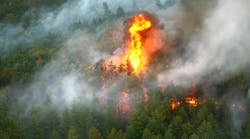CEPSI conference draws close to 2000 attendees to address the people, technology and business issues critical to an industry in transition
Executives, managers and engineers from 39 countries met at the 13 superscript th Conference of the Electric Power Supply Industry (CEPSI) in Manila, Philippines, to address the technologies, people and developments of the electric-utility industry. This year, the National Power Corp. (NPC) and the Manila Electric Co. (Meralco) hosted the conference, which consisted of the opening session, three plenary sessions and 328 technical presentations.
Southeast Asia is recovering from the financial crisis that hit in the late 1990s, which slowed the need for new generation and transmission. As growth picks up, government officials throughout the region are looking at ways to bring in foreign capital to meet rising electricity demand.
In the opening ceremony, Philippine President Joseph Estrada said the government has made significant progress in the stability of power supply and now has provided electricity for 80% of the population. Estrada predicts full electrification will take place by the end of his term.
The country is awaiting passage of the power reform bill, which will address the privatization of NPC's restructuring of the electric industry. Soon NPC assets will be sold under strict compliance to international bidding processes. To date, 100 companies have shown interest in participating in NPC's privatization. Estrada expects electricity demand to double by 2020, which will require significant external investment.
Utilities throughout the Asia-Pacific region are looking at technologies to improve processes and lower costs. In his technology plenary session paper, "Tan Sri Datuk," Dr. Ahmud Tajuddin Ali, CEO of Tenaga Nasional Berhad, Malaysia, discussed the role of high-voltage direct current (HVDC) in interconnecting Malaysia and Thailand. He also acknowledged the need for asset management tools, including life-extension models for existing infrastructure.
John Danielsen, former CIO of U.S. utility Pacific Gas and Electric, discussed the difficulty of transitioning from a regulated marketplace to an environment that accommodates power traders, generation providers and retailers. He described the complex information technology and telecom schemes that will be required to transact business at transmission and distribution levels.
Herman Amelink, CEO of KEMA Consulting, predicts that the customer will become king, and that utilities must react quickly to customer needs, otherwise, there will be little opposition to the purchase of a utility by a larger player. Amelink acknowledged the emergence of service providers that can design, install, and now, even maintain distribution lines.
Donald Volzka, president of the Power Engineering Society of the Institute of Electrical and Electronic Engineers (IEEE), addressed the impact of restructuring on engineers. Volzka sees utilities predominantly moving in directions dictated by legal and financial pressures, with the engineering role held in less esteem. With recent downsizing and the cutback or elimination of power programs at universities, Volzka now sees a shortage of qualified engineers to address critical reliability and power-quality issues.
In the plenary session dealing with people, Thomas de Miguel, managing director of Soluziona, Union Fenosa Acex, predicted the ways utility professionals would remake themselves to meet a competitive future. Miguel said the deregulated telecommunications industry needs professionals skilled in mass marketing, branding and customer psychology, with top marketing executives from consumer products companies courted by the telecom giants.
The technical sessions gave equal weight to generation, transmission, distribution, restructuring, planning, financing, customer service, communications and system operations and control. With nine tracks, attendees almost had too much to choose from. Those with portable computers, however, could preview papers provided on CD-ROM at registration.
The sessions were well moderated, with attendees encouraged to challenge speakers and share experiences. The technical tours did not conflict with sessions, enabling attendees to visit one of three generating facilities or tour Meralco's development center.
In a region of the world where business is transacted through relationships, the exhibit hall teemed with high energy. In addition to major global equipment and software vendors, regional utilities offered solutions to attendees through for-profit subsidiaries and joint-venture initiatives.
The showering of small gifts and lavish evening entertainment for attendees confirmed the reputation of the Filipino people as good hosts.

